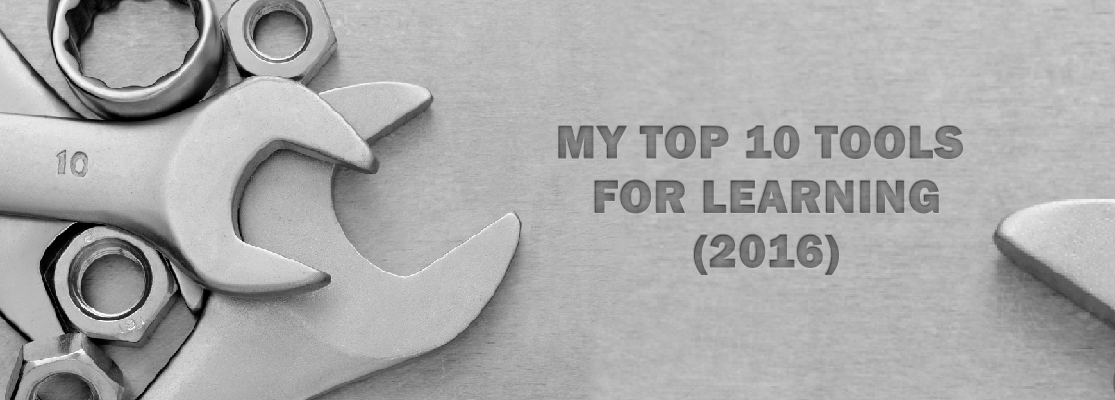MY TOP 10 TOOLS FOR LEARNING (2016)
For nine years now, Jane Hart has been compiling the list of Top 100 Tools for Learning. This is the 10th year (the list has now extended to the Top 200 Tools), and voting is currently on, where you name the top 10 tools that you think are valuable. The link to the voting page is here. And the last day to vote is 23rd September 2016.
Here’s what I voted for:
1. Google Search: A mobile encyclopedia I carry around with me. Has answers for everything, and eliminates the need to ‘remember’ anything.
2. Twitter: I recently discovered the joy of Twitter for learning, especially Twitter chats, and have been hooked ever since. While some consider the format (of 140 characters) a constraint, I see it as liberating.
3. Microsoft Word: Invaluable for writing document drafts, I often use a blank / scrap document to jot down my thoughts. Also, a great tool for storyboarding, especially when you know there will be multiple rounds of reviews and edits. Word can track changes really well, and you’ll know who made what changes in the document.
4. Microsoft PowerPoint: Great for presenting ideas. Again, I look at this as a storyboarding tool. Works very well for presenting complex ideas and interactions.
5. Microsoft Excel: The best tool I know for estimation and reporting. All you need to know are a few basic formulae, and Excel can work wonders for you.
6. Microsoft Project: An extremely powerful project management tool… but at its bare minimum, can make complex scheduling seem like child’s play.
7. Diigo: A great tool for social bookmarking, it allows you to quickly save web pages for later reading and referencing. You can even annotate sections of web pages.
8. Skype: Helps keep in touch, and connect with clients and colleagues in a hassle-free manner.
9. WhatsApp: Currently used more for social sharing, and less for learning. However, has immense potential for learning in closed groups.
10. WordPress: Okay, I’m just adding it in so it will serve as a reminder that I should blog more 🙂
So, what are your top ten tools?
Written by Srividya Kumar
(Co-Founder at Learnnovators)
_________________________________
Published on 17-Sep-2016








